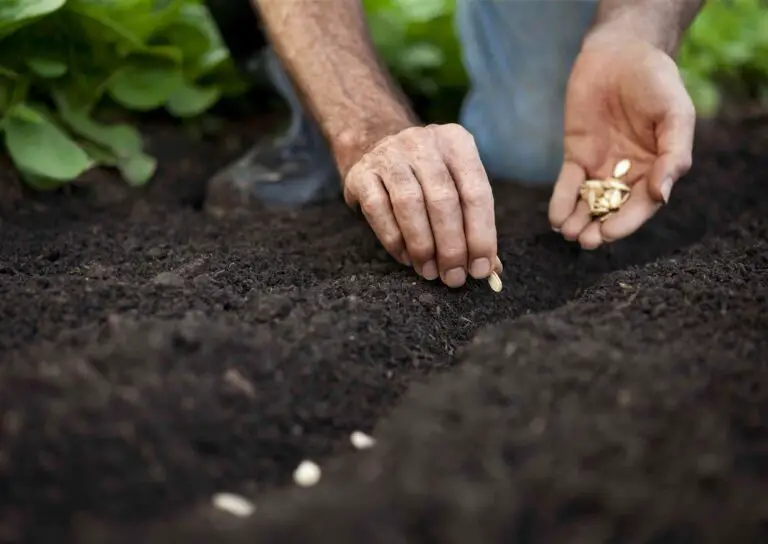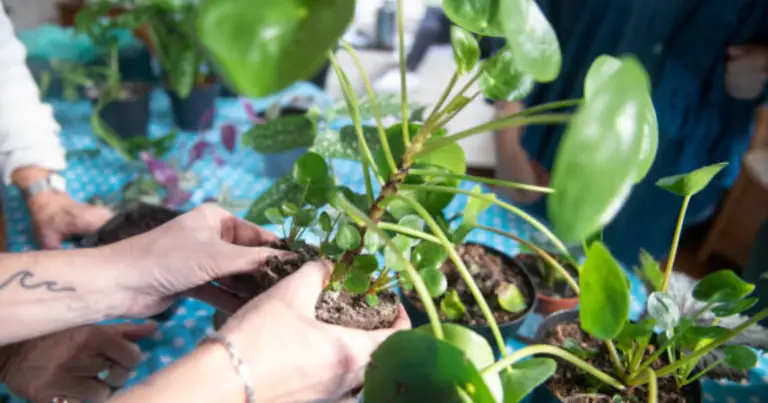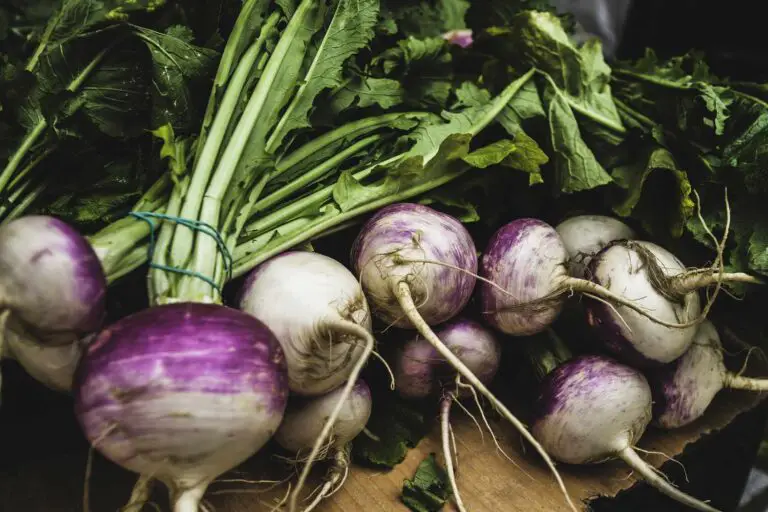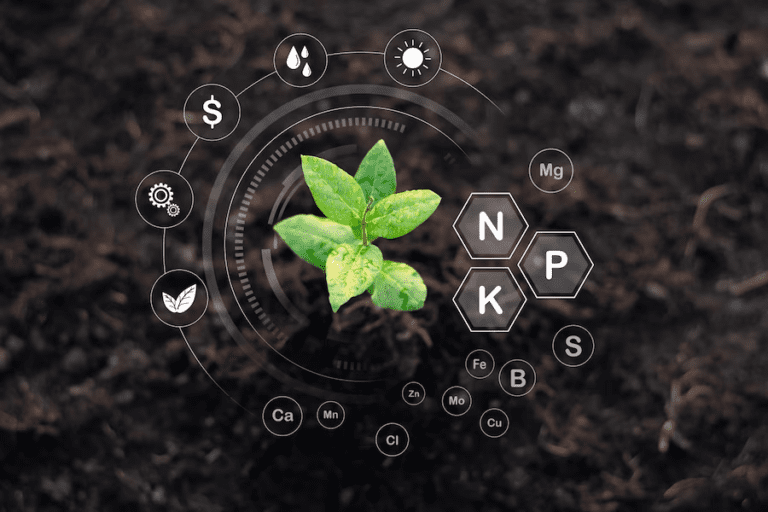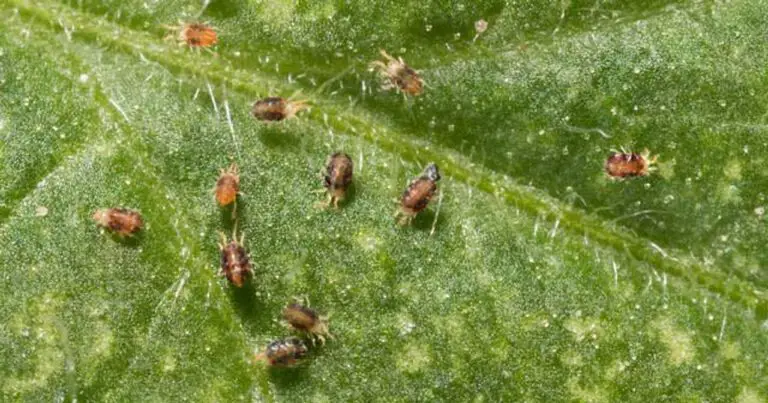Growing Mint Indoors: A Minty-Fresh Primer
Table of Contents
Benefits of Growing Mint Indoors
Growing mint indoors offers a multitude of benefits that make it a popular choice among garden enthusiasts. One of the primary advantages is the convenience and accessibility it brings. Regardless of the weather conditions or limited space, having mint readily available indoors ensures a fresh and abundant supply throughout the year. Moreover, having an indoor herb garden allows for easy access to delicious and aromatic mint leaves, enhancing the flavor of various culinary creations.
Another benefit of growing mint indoors is its versatility and functionality. Mint can be used in a wide range of dishes and beverages, adding a refreshing and vibrant twist to recipes. From cocktails and smoothies to salads and desserts, the possibilities are endless. Additionally, the aromatic qualities of mint can also serve as a natural air freshener, providing a delightful scent in your home while also potentially offering health benefits such as improving digestion and alleviating headaches. With its potential to enhance both the taste and ambiance of your living space, growing mint indoors proves to be a valuable and rewarding endeavor.

Selecting the Right Mint Varieties for Indoor Growing
When it comes to selecting the right mint varieties for indoor growing, there are several factors to consider. First and foremost, it is important to choose mint varieties that are well-suited for indoor cultivation. Some varieties, such as peppermint and spearmint, are known to thrive in indoor environments due to their adaptability to lower light levels and controlled growing conditions.
Another crucial consideration is the growth habit of the mint variety. Some mint varieties, like chocolate mint or apple mint, tend to be more compact and bushy, making them ideal for growing in small containers or limited spaces. On the other hand, mint varieties like orange mint or pineapple mint can have a more sprawling growth habit, requiring larger containers or dedicated garden areas.
It is also essential to take into account the intended use of the mint. Different mint varieties have distinct flavors and aromas, ranging from traditional minty freshness to unique hints of fruit or chocolate. Selecting the right mint variety for your indoor garden depends on whether you plan to use the leaves for culinary purposes, teas, or even for aromatic purposes like potpourri or essential oils.
By carefully considering these factors, you can choose the right mint varieties that will not only flourish in your indoor garden but also provide you with the desired flavors and aromas for your culinary creations or aromatic delights.
Understanding the Ideal Growing Conditions for Mint Indoors
Mint is a versatile herb that can thrive both indoors and outdoors. However, when it comes to growing mint indoors, creating the ideal growing conditions is critical to ensuring its success. Understanding the needs of mint plants can help you provide the right environment for their growth and development.
First and foremost, mint plants require ample sunlight to flourish. Place your indoor mint plant in a location that receives at least 6 hours of direct sunlight every day. If you don’t have access to sufficient natural light, you can supplement it with artificial grow lights. This will provide the necessary light spectrum for your mint plants to photosynthesize effectively.
In addition to light, mint plants prefer a slightly cooler temperature range between 65°F and 75°F (18°C to 24°C). Avoid exposing your mint to extreme temperatures or drafts, as this can stress the plants and hinder their growth. Maintaining a consistent temperature will promote healthy foliage and ensure optimal development.
To maintain the ideal growing conditions for your indoor mint, it’s important to control the humidity levels. Mint plants prefer moderate humidity, around 40% to 50%. In dry indoor environments, you can increase humidity by misting the leaves with water or placing a water-filled tray nearby. However, it’s crucial to avoid excessive moisture, as this can lead to fungal diseases.
By understanding and implementing the ideal growing conditions for mint plants indoors, you are setting the stage for a successful and thriving herb garden. From providing adequate sunlight to maintaining the right temperature and humidity levels, each element plays a vital role in supporting the growth and development of your indoor mint plants.

Choosing the Right Container for Your Mint Plants
When it comes to growing mint indoors, choosing the right container is essential for the success of your plants. Mint is a vigorous herb that tends to spread quickly, so it is important to select a container that provides enough space for its roots to grow. Opting for a container with a diameter of at least 12 inches will ensure that the mint plants have enough room to expand and thrive.
In addition to size, consider the material of the container. Porous materials such as terracotta or clay allow for better air circulation and moisture regulation, which can prevent issues like root rot. However, if you opt for a porous container, keep in mind that it may dry out more quickly compared to non-porous options. Non-porous containers, such as plastic or glazed ceramic, retain moisture better but may require additional drainage holes to avoid waterlogged soil.
Remember that mint is a herb that loves to spread, so if you want to prevent it from overrunning your other plants or taking over your entire container garden, consider using a separate container specifically for mint. This will help contain its growth and allow you to better manage its spread. Additionally, if you prefer to have multiple varieties of mint, it is advisable to plant them in separate containers to avoid cross-pollination and preserve the distinct flavors and characteristics of each variety.
By carefully selecting the right container for your mint plants, you will provide them with the optimal growing environment, promoting healthy and vigorous growth. Stay tuned for our upcoming sections on preparing the soil for indoor mint cultivation and planting and transplanting mint seedlings to further enhance your indoor herb garden.
Preparing the Soil for Indoor Mint Cultivation
Preparing the soil is an essential step in successful indoor mint cultivation. The right soil composition and nutrient balance are crucial for the healthy growth and development of mint plants. When selecting soil for your indoor mint garden, opt for a well-draining and lightweight potting mix. This will ensure that excess moisture is efficiently drained, preventing root rot and other moisture-related issues. Additionally, a lightweight mix allows for better airflow within the soil, promoting healthy root development.
It is recommended to choose a potting mix that contains a blend of organic matter, such as peat moss or coconut coir, and other soil amendments like perlite or vermiculite. These ingredients enhance the soil’s moisture retention capacity and provide essential nutrients to support robust mint growth.
Before planting your mint seedlings, it’s crucial to prepare the soil properly. Start by filling the chosen container with the potting mix, leaving at least an inch of space at the top for watering. Gently pat down the surface to level it out, ensuring an even distribution of the soil. It is important to note that mint plants prefer a slightly acidic soil with a pH level between 6.0 and 7.0. So, before planting, it is advisable to test the soil’s pH using a soil testing kit or consult a local garden center for assistance.
Adjusting the soil’s acidity levels with the addition of organic matter, such as compost or peat moss, can help create the optimal growing environment for your mint plants.
Planting and Transplanting Mint Seedlings
When planting and transplanting mint seedlings, it is important to choose a suitable location that provides the ideal growing conditions for this herb. Mint thrives in full sun to partial shade, so select a spot that receives at least 6 hours of direct sunlight per day. Additionally, mint prefers moist soil with good drainage, so ensure that the planting area has well-draining soil.
Before planting mint seedlings, it is crucial to prepare the soil properly. Start by removing any weeds or debris from the area and loosen the soil with a garden fork or tiller. Mix in some organic matter, such as compost or aged manure, to improve the soil’s fertility and water-retention capabilities. This will provide the young seedlings with a healthy foundation for growth.
To transplant mint seedlings, dig a hole slightly larger than the root ball of the plant. Gently remove the seedling from its container and place it in the hole. Fill the hole with soil, firming it gently around the base of the plant to eliminate air pockets. Water the seedling thoroughly after transplanting to help settle the soil and provide necessary hydration.
By taking these steps when planting and transplanting mint seedlings, you set the stage for successful growth and a bountiful harvest of this fragrant and versatile herb. With proper care and attention, your indoor mint plants will flourish, adding beauty and flavor to your home.

Watering and Fertilizing Your Indoor Mint Plants
To ensure healthy growth and abundant harvests, proper watering and fertilizing are essential for your indoor mint plants. Mint plants have a high water requirement, so it is crucial to keep the soil consistently moist, but not waterlogged. Check the moisture level in the soil regularly by inserting your finger about an inch deep. If it feels dry, it’s time to water your mint plants. However, be cautious not to overwater, as excessive moisture can lead to root rot and other diseases.
When watering your indoor mint plants, it is best to use room temperature water. This prevents shock to the roots and allows for better absorption. A good practice is to water the plants from the bottom rather than from above. Place the container in a tray or saucer filled with water and allow the roots to take up water through the drainage holes. Be sure to remove any excess water from the tray after 30 minutes to prevent the roots from sitting in standing water.
Fertilizing your indoor mint plants is necessary to replenish the nutrients in the soil and promote vigorous growth. Start fertilizing your mint plants about a month after planting or when you see active growth. Choose a balanced, water-soluble fertilizer with equal proportions of nitrogen, phosphorus, and potassium. Dilute the fertilizer according to the instructions on the package, as using too much can burn the roots and damage the plants. Apply the fertilizer to the soil around the base of the plants, taking care to avoid contact with the leaves. Repeat this process every four to six weeks throughout the growing season.
By providing adequate water and proper nutrients, you’ll be rewarded with healthy and thriving indoor mint plants. However, remember that each variety may have specific requirements, so it’s beneficial to research the specific needs of your chosen mint variety. Taking the time to ensure optimal watering and fertilizing conditions will contribute to the overall success of your indoor mint cultivation venture.
Managing Light and Temperature for Successful Mint Growth
To ensure successful growth of your indoor mint plants, it is imperative to manage both light and temperature conditions. Mint plants require ample, but not excessive, light to thrive in an indoor setting. Ideally, you should place your mint plants in an area that receives six to eight hours of sunlight each day. If natural sunlight is limited, you can supplement it with fluorescent grow lights placed about six inches above the plants. Remember to adjust the light duration based on the specific needs of your mint variety. Mint plants thrive in temperatures between 65 to 75 degrees Fahrenheit during the day and slightly cooler temperatures, around 55 to 60 degrees Fahrenheit, at night.
Proper temperature management is crucial, as extreme temperature fluctuations can harm your mint plants. Avoid placing your mint plants near drafts or heat sources, such as air conditioning vents or radiators, as these can cause stress and reduce growth. Additionally, monitor the ambient humidity level of your indoor environment, as overly dry conditions can negatively impact the health of your mint plants. Increasing humidity can be achieved by placing a tray of water near the plants or using a humidifier. By carefully managing light and temperature, your indoor mint plants will have the ideal conditions for robust growth and a bountiful harvest.

Pruning and Harvesting Mint Leaves for Maximum Flavor
When it comes to mint, the flavor lies in its leaves. Pruning and harvesting these leaves at the right time is crucial for achieving maximum flavor in your culinary creations. The process of pruning involves trimming back the mint plant to encourage new growth and maintain its shape. Harvesting, on the other hand, involves carefully plucking the mature leaves to be used fresh or dried for future use.
To ensure maximum flavor, it is important to prune and harvest mint leaves regularly. Pruning helps to maintain the plant’s vitality and prevents it from becoming woody or sprawling. By removing any excessive growth, you encourage the plant to focus its energy on producing more flavorful leaves. Harvesting, on the other hand, allows you to enjoy the fresh aroma and taste of mint in your dishes. Whether you’re using the leaves immediately or preserving them for future use, harvesting at the right time is key to capturing the essence of this herb.
In conclusion, pruning and harvesting mint leaves are essential steps in cultivating this aromatic herb indoors. Through proper pruning techniques, you can maintain the health and shape of your mint plant, while regular harvesting ensures that you can savor the maximum flavor in your culinary endeavors. So grab your gardening shears and prepare to enjoy the fresh and vibrant taste of homegrown mint.
Preventing Pests and Diseases in Indoor Mint Plants
Keeping your indoor mint plants free from pests and diseases is essential for their healthy growth and optimal flavor. Here are some effective ways to prevent and control common issues that may arise:
1. Regular inspection: Take the time to regularly inspect your mint plants for signs of pests or diseases. Look for discoloration, wilting leaves, holes in the foliage, or tiny insects crawling on the plant. Early detection can help prevent the problem from spreading.
2. Proper sanitation: Maintaining cleanliness in the growing area is crucial. Remove any fallen leaves or debris from the plant’s base, as these can harbor pests or diseases. Additionally, practice good hygiene by washing your hands and tools before handling the plants to avoid introducing any contaminants.
3. Adequate airflow: Providing proper airflow around your mint plants helps prevent the development of moisture-related problems like fungus and mildew. Avoid overcrowding the plants and ensure they have enough space to grow without touching each other.
4. Organic pest control: Instead of relying on harsh chemicals, opt for organic pest control methods. For example, you can introduce beneficial insects like ladybugs or lacewings that prey on pests or create homemade insecticidal soap using mild dish soap and water.
5. Quarantine new plants: Whenever introducing new mint plants into your indoor garden, quarantine them for a few days to observe for any signs of pests or diseases. This precautionary measure can prevent the potential spread of problems to your existing plants.
By implementing these prevention strategies, you can significantly reduce the risk of pests and diseases affecting your indoor mint plants. Remember, early intervention and proactive care are key to maintaining a healthy and thriving mint garden.
Propagating Mint Plants for Continuous Indoor Harvests
Propagating mint plants is an excellent way to ensure a continuous harvest of this versatile herb indoors. There are several methods you can use to propagate mint, including stem cuttings and division. Stem cuttings are a simple and effective way to multiply your mint plants. To do this, select a healthy stem from an existing mint plant and make a clean cut just below a node. Remove the lower leaves, leaving only a few at the top, and place the cutting in a glass of water. Within a week or two, roots will start to develop, and you can then transfer the cutting to a pot filled with well-draining soil.
Division is another method that involves separating an established mint plant into smaller sections. This can be done by carefully digging up the plant and dividing it into several clumps, making sure each clump has roots and shoots. Replant these clumps in separate containers, and they will quickly establish themselves as new mint plants. Whichever method you choose, propagating mint plants is an easy and rewarding way to ensure a bountiful supply of fresh mint leaves for your culinary adventures.
By propagating mint plants indoors, you not only increase your supply of fresh herbs but also benefit from the ability to closely monitor and control their growth. It allows you to create an ideal environment for the mint plants to thrive, providing them with the necessary nutrients, light, and temperature. When propagating mint, it is important to choose a high-quality potting mix that is well-draining to prevent root rot. This will provide the plant with the necessary nutrients while allowing excess water to drain away. Additionally, placing the plants in an area that receives bright, indirect light will promote healthy growth.
Mint plants prefer temperatures between 60 and 70 degrees Fahrenheit (15-21 degrees Celsius), so it is important to keep them away from drafts or extreme temperature fluctuations. With proper care and attention, the mint plants you propagate indoors will quickly establish themselves and provide a continuous source of fresh, aromatic leaves for your culinary endeavors.

Creative Uses for Your Homegrown Mint
Once you have successfully grown your own mint plants indoors, you may find yourself wondering what creative uses you can explore with your bountiful harvest. Mint is a versatile herb that can add a refreshing and invigorating touch to a wide range of culinary creations and household products. From beverages to desserts, and even homemade beauty products, the possibilities are endless.
One of the most popular uses for homegrown mint is in beverages. The bright and aromatic flavors of mint can liven up a variety of drinks, making them incredibly refreshing and enjoyable. Whether you’re in the mood for a classic mojito, a soothing cup of mint tea, or a flavorful mint-infused water, your homegrown mint will provide the perfect ingredient. You can also experiment with incorporating mint into smoothies, lemonades, cocktails, and mocktails to create unique and flavorful concoctions that will impress your guests.
In addition to beverages, mint can be utilized in desserts to add a delightful twist of flavor. From mint-infused chocolates and ice cream to mint-flavored cakes and cookies, incorporating fresh mint leaves into your sweet treats will elevate them to a whole new level. The cool yet vibrant taste of mint pairs particularly well with chocolate, creating a refreshing contrast that will leave your taste buds craving for more.
Beyond the culinary realm, you can also use your homegrown mint to make natural and homemade beauty products. Mint contains menthol, which has a soothing and invigorating effect on the skin. By infusing mint leaves into oils, you can create a refreshing massage oil or a revitalizing body scrub. Additionally, you can make a homemade mint face mask by blending mint leaves with other natural ingredients such as yogurt or honey, providing your skin with a refreshing and rejuvenating treat.
As you explore the creative uses for your homegrown mint, remember to experiment, have fun, and let your imagination run wild. The vibrant flavors and enticing aromas of mint are sure to add a touch of freshness to your culinary adventures and DIY projects alike. So, get ready to savor the flavors, invigorate your taste buds, and indulge in the delights that your very own mint plants can bring to your table.
Preserving Mint Leaves for Future Use
Preserving mint leaves is a great way to ensure that you can enjoy the fresh, invigorating flavor of mint long after the growing season has ended. There are several methods that you can use to preserve mint leaves, each with its own unique benefits. One popular method is drying mint leaves, which allows for easy storage and retains much of the herb’s aromatic properties. To dry mint leaves, simply hang them in bunches upside down in a cool, dry location until they become crispy. Once dry, you can crumble the leaves and store them in airtight containers for future use in teas, culinary creations, or even homemade bath products.
Another method of preserving mint leaves is freezing. Freezing mint leaves is a fantastic way to retain their vibrant green color and intense flavor. To freeze mint leaves, start by washing them thoroughly and patting them dry. Next, remove the leaves from the stems and place them in a single layer on a parchment-lined baking sheet. Pop the baking sheet into the freezer for a few hours until the leaves are completely frozen.
Once frozen, transfer the mint leaves to freezer-safe containers or bags and store them in the freezer until needed. Freezing mint leaves is particularly convenient because they can be easily chopped or crumbled while still frozen, making it effortless to add a burst of minty freshness to a variety of dishes throughout the year.
Preserving mint leaves for future use is a simple and rewarding process that allows you to enjoy the delightful flavors of mint long after the growing season has ended. Whether you choose to dry or freeze the leaves, both methods offer a convenient way to add a touch of minty freshness to your favorite recipes or beverages any time of the year. So don’t let your abundant harvest of mint go to waste – preserve those vibrant green leaves and savor their flavor all year round.
Common Mistakes to Avoid when Growing Mint Indoors
When growing mint indoors, there are several common mistakes that you should avoid in order to ensure the health and vitality of your plants. One common mistake is overwatering. Mint plants prefer well-drained soil, and excessive moisture can lead to root rot and other fungal diseases. It is important to allow the top inch of soil to dry out between watering to prevent waterlogged conditions.
Another mistake to avoid is using the wrong type of soil. Mint thrives in a loamy, well-draining soil mixture. Avoid using heavy clay soils or those that retain too much moisture, as this can suffocate the roots and hinder proper growth. Instead, opt for a potting mix that is specifically formulated for herbs or vegetables, or create your own blend by combining equal parts peat moss, compost, and coarse sand.
By avoiding these common mistakes, you can ensure a successful indoor mint growing experience. Stay tuned for more tips and advice to help you cultivate healthy and flavorful mint at home.

Troubleshooting Common Issues in Indoor Mint Cultivation
When growing mint indoors, there can be a few common issues that may arise. One such issue is the wilting or yellowing of the leaves. This can often be attributed to inadequate watering or overwatering. Mint plants require consistent moisture, so it is important to find the right balance. Another common issue is the presence of pests, such as aphids or spider mites, which can attack and damage the mint plants. Regularly inspecting the plants and taking appropriate measures, such as using organic insecticides, can help prevent pest infestations.
In addition to these issues, another problem that may occur is the lack of proper airflow. Mint plants thrive in well-ventilated spaces, and without adequate air circulation, they may develop fungal diseases such as powdery mildew. To prevent this, ensure that the area around the plants is free from clutter and that there is sufficient space between each plant. Additionally, keep an eye out for any signs of disease or infection, such as black spots on the leaves or a slimy texture, and take immediate action to address the problem. By troubleshooting and addressing these common issues, you can ensure that your indoor mint plants remain healthy and vibrant.
Resources for Further Information on Growing Mint Indoors
If you’re looking for more information on growing mint indoors, there are several resources available to help you along your gardening journey. These resources can provide additional tips, guidance, and insights to ensure your indoor mint plants thrive.
1. Gardening websites and forums: Online platforms dedicated to gardening often have specific sections or articles dedicated to growing mint indoors. These resources provide step-by-step instructions, troubleshooting advice, and community forums where you can connect with other gardening enthusiasts to share experiences and ask questions.
2. Books and e-books: There are numerous books available that focus on indoor gardening and growing herbs such as mint. These resources offer in-depth knowledge on selecting the right varieties, ideal growing conditions, proper care and maintenance, as well as various creative uses for homegrown mint. Look for titles authored by experienced gardeners or horticulturists to ensure you’re getting reliable and expert advice.
Remember, as you explore these resources, it’s important to verify the credibility and expertise of the sources you rely on. Always cross-reference information across multiple reliable sources to ensure accuracy and avoid misleading advice. With the right knowledge at your fingertips, you’ll be well-equipped to successfully grow mint indoors and enjoy its fresh flavors and aromas throughout the year.
What are the benefits of growing mint indoors?
Growing mint indoors provides easy access to fresh herbs year-round, allows you to control the growing conditions, and adds a pleasant aroma to your home.
How do I select the right mint varieties for indoor growing?
Choose compact varieties like spearmint or peppermint that are well-suited for container cultivation and have a slower growth habit.
What are the ideal growing conditions for mint indoors?
Mint thrives in well-draining soil, with a temperature range of 65-75°F (18-24°C), and requires 4-6 hours of direct sunlight or bright indirect light per day.
How do I choose the right container for my mint plants?
Use a container with drainage holes to prevent waterlogging, and ensure that it is large enough to accommodate the growth of the mint plant.
How do I prepare the soil for indoor mint cultivation?
Use a well-draining potting mix, enriched with organic matter, and ensure the soil pH is between 6.0-7.0 for optimal growth.
How do I plant and transplant mint seedlings?
Plant mint seedlings in the container, leaving enough space for growth, and transplant them carefully to avoid damaging the roots.
How often should I water and fertilize my indoor mint plants?
Water mint when the top inch of soil feels dry, and fertilize every 4-6 weeks with a balanced organic fertilizer diluted according to the package instructions.
How should I manage light and temperature for successful mint growth indoors?
Place mint in a sunny location where it receives 4-6 hours of direct sunlight or use artificial grow lights, and maintain a temperature range of 65-75°F (18-24°C).
How do I prune and harvest mint leaves for maximum flavor?
Regularly prune mint to encourage bushier growth and harvest the leaves by cutting the stems just above a leaf node for the best flavor.
How can I prevent pests and diseases in my indoor mint plants?
Keep the plants well-ventilated, avoid overwatering, and regularly inspect for pests like aphids or spider mites. Use organic pest control methods if necessary.
How can I propagate mint plants for continuous indoor harvests?
Propagate mint through stem cuttings by placing them in water until roots develop, and then transplanting them into pots with well-draining soil.
What are some creative uses for homegrown mint?
Homegrown mint can be used in various culinary applications such as teas, cocktails, desserts, or added to savory dishes to enhance flavors.
How can I preserve mint leaves for future use?
Dry mint leaves by hanging them upside down in a well-ventilated area or use a dehydrator. Once dry, store the leaves in an airtight container away from light.
What are common mistakes to avoid when growing mint indoors?
Avoid overwatering, using containers without drainage holes, neglecting proper lighting, and allowing mint plants to become overcrowded.
How can I troubleshoot common issues in indoor mint cultivation?
Common issues include yellowing leaves, fungal diseases, or stunted growth. Troubleshoot by adjusting watering, improving ventilation, or addressing pest problems.
Where can I find further information on growing mint indoors?
For more information and detailed guidance on growing mint indoors, you can refer to the following resources:
1. [Website Name]: [Website URL]
2. [Book Title]: [Book Author]
3. [Gardening Forum or Community]: [Website URL]

Beck Wakeford is a dedicated writer at SouthElMonteHydroponics, with a fervent enthusiasm for agriculture and technological innovation. Armed with a degree in Agricultural Engineering from a leading university, Beck specializes in hydroponic systems design, automation, and optimization. Their passion for merging traditional farming with cutting-edge technology drives them to explore novel solutions for sustainable food production. Beck’s expertise and keen interest in the intersection of engineering and agriculture make them a valuable asset in the quest for efficient and eco-friendly farming practices. Through their writing, Beck aims to inspire others to embrace the potential of hydroponics in shaping a more sustainable future.


